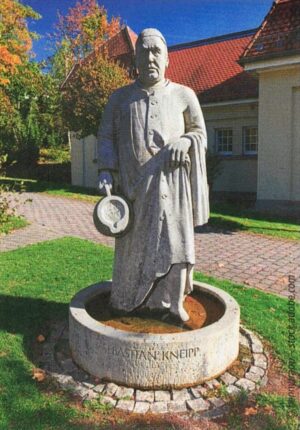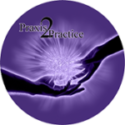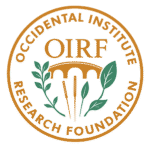Energy and Exhaustion
Chronic Fatigue Syndrome
Possibilities and Opportunities of Complementary Procedures
Especially since the emergence of Long- and Post-COVID syndromes, chronic fatigue syndrome has stepped into public awareness much more clearly. For those affected, this clinical picture can mean a significant restriction of their previous life. Like a chameleon, it is very difficult to assess and can be associated with a wide variety of symptoms.
Those affected are often very desperate and feel left alone because research here is still in its infancy. Reason enough to take a look at complementary approaches from naturopathy and other procedures that, together with orthodox medicine, are intended to bring a better quality of life again.
Definition
Myalgic encephalitis (ME) or rather Chronic Fatigue Syndrome (CFS) is classified as a complex neuroimmunological complaint complex with an unknown cause. Among other things, viral and bacterial infections as well as genetic predispositions are associated with it. In general, however, the various symptoms cannot be traced back to an explainable clinical picture. It is estimated that about 0.5% of the population is affected. The distinction between “simple” tiredness or exhaustion and chronic fatigue syndrome must be emphasized urgently, as those affected can be subjected to a massive restriction of their living conditions. However, symptoms and their intensity can vary significantly. The International Statistical Classification of Diseases lists ME/CFS as a disease of the nervous system under the code G93.3.
Symptoms
One of the characteristic symptoms is post-exertional malaise, a massive intolerance to exercise even after minimal physical activity, combined with pronounced states of tiredness and exhaustion without a recognizable trigger. Other symptoms can include a decrease in activity levels, the so-called brain fog, joint and muscle pain, palpitations, dizziness, shortness of breath, digestive disorders as well as sensory, perception and word-finding disorders. The diagnosis is difficult due to the lack of research. The Canadian consensus criteria can provide information. For diagnosis, five main criteria (1-5) as well as two secondary criteria (6-8) must be met.
- Fatigue
- Deterioration of condition after exertion
- Insomnia
- Aches
- Neurological/cognitive dysfunctions
- Autonomic dysfunctions
- Neuroendocrine dysfunctions
- Immune dysregulation
The respective therapy is always symptom-related and provides relief. According to the current state of knowledge, a cure is not possible.
In addition to a precise anamnesis, an assessment of the condition and an interdisciplinary cooperation, the following procedures are important for the practice: support without excessive demand, small steps, motivation, joie de vivre and building trust.
Strengthening the Mental Level
Especially in chronic fatigue syndrome, the mental level plays a central role in stabilizing or improving one’s own condition. That’s why it’s so important in practice to take patients by the hand and show them different ways to become stronger again.
Lifestyle and Mental Techniques
The establishment of structures, daily rituals and benchmarks in the daily routine can be very important for patients with chronic fatigue syndrome. Losing oneself in one’s own powerlessness and inability can not only drastically minimize any sense of time or the joy of doing, but can also blur the understanding of personal boundaries through the constant feeling of being overwhelmed. Principles of the “Order of life” (one of the pillars of Kneipp therapy, see following) can therefore become an essential support. In therapy or in cooperation with psychologists/psychotherapists, it may be necessary to get the daily routine in shape and to plan fixed activities as well as elements for activation. What these are for the respective person should be tailored as precisely as possible to the individual condition. An understanding of one’s own energy level and the available physical strength should also be developed. Mental exercises such as the energy scale can be very useful here. Patients are trained to estimate their energy between 0 and 100% themselves. The method of the energy account according to the German personality trainer Steffen Kircher makes you aware of energy-giving and energy-sapping components of everyday life. Accordingly, work can be done to promote or reduce them. Resilience training measures can additionally stabilize the mental level.
Hypnosis
The subconscious in particular can have a major influence on the condition of those affected through emotions and ideas. If there are beliefs that additionally promote exhaustion, or general ideas about one’s own weaknesses or personal inability, then it can be more difficult for a wide variety of procedures to have an effect. Hypnosis can offer possibilities to dive back into positive emotions and reactivate helpful body resources in order to develop new energy, confidence and motivation and to not be trapped in the current state. For further work, those affected can write down very concrete self-hypnosis instructions on how they can work in everyday life with certain formulations, visualizations, the resources made aware of in the hypnosis session or even created anchors (key stimuli associated with positive emotions, such as ideas, sounds, touches, colors, etc.). Hypnosis is intended to support a new perception by means of one’s own imagination and the creative abilities of the brain. This can be the foundation stone to gradually create them positively in everyday life.
Meditation and Mindfulness
Conscious centering and working with one’s own concentration can be great challenges for those affected by chronic fatigue syndrome. Training this slowly can therefore not only be beneficial, but can also help to look at exhaustion in general from a new perspective. Before putting patients on the path of meditation, it can be much more useful at first to incorporate mindfulness and simple exercises into everyday life. If they begin to recognize and appreciate the small details, their situation possibly seems less hopeless. You can start, among other things, by looking at a candle flame, the tip of a ballpoint pen or a point in the room for a minute. During this time, all the energy is directed only to this one focal point. When thoughts come, one always returns to the flame, the tip or the respective point. The time window can be extended gradually.
But mindfulness training in everyday things can also help to increase cognitive abilities again: when eating a certain meal, perceive every bite and filter the different tastes, walk barefoot in a meadow and feel the ground, observe the type of thoughts or the body itself. This can then evolve into specific meditations where you just observe your breathing, repeat a mantra for a period of time, or look at yourself from a bird’s eye view. With all techniques, it is important to have a high focus and to direct your energy back to the body, the mantra or the view from above. Patients can be guided here in a needs-oriented manner and can continue working independently.
Relaxation methods
Especially when sleep as a natural regeneration mechanism is no longer sufficient as an energizing measure, possibly a more profound form of rest may be needed to replenish one’s own stores and strengthen one’s own body awareness concerning the alternation between activity and recovery. Depending on the level at which those affected feel the exhaustion most clearly, relaxation techniques can be specifically recommended and guided in practice. If there is more mental exhaustion, among other things autogenic training as a comprehensive method with its different exercises can bring new strength and deep peace.
In order to be able to better regulate tension and effort in the body, Jacobson’s progressive muscle relaxation can be used, for example. Targeted breathing exercises can be an energy turbo. In this way, more oxygen is transported through the body, and at the same time many bodily processes can be deepened. Qigong, on the other hand, can awaken an understanding of physical activity through its flowing movement sequences and consciously direct energy. The various methods are usually much more than mere relaxation techniques, but make us aware of the importance of changing activity levels.
Vitamins and Micronutrients
Replenished vitamin and nutrient stores are essential prerequisites for holistic health. Therefore, in the case of chronic fatigue syndrome, attention should also be paid to the corresponding blood values. For nerve health, vitamins B6 and B12, among others, are indicated. Vitamin C can be beneficial for a powerful immune system, detoxification and the breakdown of free radicals. Vitamin E strengthens the musculoskeletal system and protects against inflammation. Vitamin D is not only important for bone health, but also helps build muscle and can correlate significantly with one’s own energy.
When it comes to micronutrients, it is important to keep an eye on the values of iron, zinc, selenium, magnesium and potassium. While iron may be related to oxygenation and red blood cell quality, magnesium is very valuable for muscles and energy. Selenium and zinc are very important for the immune system, for chronic processes in the body, for cell building and in the fight against cell stress. Coenzyme Q10 and glutathione may play a significant role in strengthening the mitochondria. Q10 is involved in processes of mitochondrial energy supply in the respiratory chain and has an effect on the mitochondria of the body’s cells. Glutathione is a tripeptide consisting of three amino acids which plays a central role in various metabolic processes and is important for energy levels and maintenance.
The World of Naturopathy
There are countless naturopathic directions. I would like to introduce the considerations of some proven procedures to you:
Hildegard von Bingen
It is not without reason that the Benedictine Abbess is considered a universal scholar which has allowed her knowledge in the field of medicine to survive to this day. In addition to powder mixtures, elixirs and baths, she also gave recommendations regarding the use of healing stones and plants as well as herbal wines. In the case of chronic fatigue syndrome, a pinch of fennel mixed powder, available as a ready-made mixture, can be placed in a liqueur glass with red wine and drunk 30 minutes before eating. It is considered to strengthen the circulation, deacidify and stimulate the nervous system. A liqueur glass of arum elixir can also be taken 1 to 5 times a day. This is indicated in case of weakness, exhaustion and general weakness. Hildegard von Bingen also recommends letting a galangal tablet melt on the tongue one to three times a day. In this way, body, mind and soul are stimulated, the digestive system receives more energy and the nervous system is also strengthened.
Schuessler Salts
The importance of the salts postulated by Dr. Schüßler is also clear in the case of chronic fatigue syndrome. For example, Schuessler Salt No. 03 “Ferrum phosphoricum” can be used. The phosphate it contains promotes energy production in the cells and oxygen uptake and thus provides energy in the muscles. Phosphates support nerve metabolism and increase the transmission of impulses from the nerves to the muscles. “Potassium phosphoricum” (No. 05) can also be taken – caution is advised in heart patients. This salt provides energy for body, mind and soul, can bring rest and sleep and stabilizes the nerves. “Sodium chloratum” (No. 08) can be used in cases of lack of drive and exhaustion and can bring the immune system into balance. The dosage must be individually tailored to the patient.
Medicinal Mushrooms
Various dosage forms of medicinal mushrooms, as powder, drops, capsules or [whole/dried] meal, can offer natural help for chronic fatigue syndrome. Worth mentioning, for example, would be the “Reishi”, which is considered a jack-of-all-trades and can give physical as well as mental strength. Overreactions of the central and vegetative nervous systems can be more easily compensated for and autoimmune processes can be better neutralized. Shiitake, on the other hand, can bring new energy and promote regeneration. Cordyceps, for example, increases endurance and gives willpower. At the same time, it supports the kidneys, which serve as a storage place for our energy. This mushroom is anti-inflammatory, antioxidant, detoxifying and neuroprotective. It can also improve memory capacity and concentration ability as well as stimulate motivation and positive thinking.
Homeopathy
This is preceded by a detailed anamnesis and a comprehensive assessment of the symptom picture in order to tailor potentiation and dosage to the patient in the best possible way. In the case of chronic fatigue, among other things “Arsenicum album” may be indicated, because it can be a support for people who are overloaded even with little exertion. Fear, inner restlessness and emptiness can also be balanced with this homeopathic remedy in addition to conventional medical therapy. Sepia, on the other hand, can be used where chronic exhaustion already affects the overall well-being. Especially where loved ones, hobbies or other activities are considered indifferently because of overload, sepia can bring about a change in thinking. Silicea can be used for general states of weakness and relieve inner pressure, absent-mindedness and self-doubt.
Other Options
Of course, there are many other starting points to strengthen those affected. An important sticking point, however, is the stimulation of self-efficacy. Micronutrients, supportive preparations and working on the mental level are important. At the end of the day, as mentioned above, patients should slowly make changes in their everyday lives and become active themselves. TCM and Kneipp therapy can also be helpful here.
The five pillars of Kneipp therapy Water treatments are often associated with Pastor Kneipp. However, very few people know that his concept is much more comprehensive. It consists of five equal pillars that contribute to holistic health and are intended to make ourselves active. These include:
- Order of life: This pillar includes the balance between activity and rest phases. A conscious contact to the available life time is also stimulated. In addition to the relaxation methods and mindfulness measures described above, this is particularly about dealing with one’s own way of life: What is costing me energy? How do I feel comfortable? It is precisely with these questions that we can also support patients with chronic fatigue syndrome in practice.
- Water: A basic idea of Sebastian Kneipp was the “hardening of the body”, especially with cold stimuli. The preferred medium is water. This pillar can also be well conveyed to patients for self-administration if they understand the basic rules: For example, cold water should never be applied to cool skin. If necessary, a movement should be made in advance or a warm pillow or blanket should be used in order to give the skin a pleasant basic temperature before application. The water temperature should be between 12° and 18°C – initially it is better to start with the upper limit. After the application, there is a rest phase in which the body is warmed up well again. Pastor Kneipp emphasized that small or medium-strength stimuli should be used for the water treatments, but not too small or strong. In everyday life, patients can use instructions to use, for example, facial or arm [cold affusions (hydrotherapy)], for example, to gently activate the circulation.
- Exercise: Depending on the intensity of the symptoms and restrictions on quality of life, the topic of “exercise” can be one of the biggest challenges. Therefore, show patients in practice that physical activity can already begin with microsteps. In addition to simple gymnastic exercises, short distances in the house can also be deliberately covered a few times. A daily walk in the garden can also be very beneficial and clear your head. If the patients are fitter, physical exercises, short Nordic walking distances or the use of an exercise bike can also be considered. Those affected are allowed to know their limits and extend them again in a meaningful way.
- Nutrition: Here, Pastor Kneipp pleads for the principles of simplicity, regionality and freshness. He recommends eating several small dishes throughout the day rather than just a few with long “hunger phases” in between. Even then, he was convinced of the importance of home-cooked food and emphasized that it can not always be a hot main meal, but also breakfast or dinner. Steamed fruit or raw vegetables can also be used. In this way, patients can also get back into action and regain strength through healthy food.
- Phytotherapy: Sebastian Kneipp attached great importance to the use of medicinal plants. Whether these are used in the form of teas, spas, capsules or other dosage forms is irrelevant. In case of exhaustion, Kneipp especially recommends rosemary (strengthening), nettle (cleansing), centaury (due to its bitter substances and the gastric juice-stimulating effect) and elderberry (disease-preventing, invigorating).
 Fig. 1: Statue of Sebastian Kneipp
Fig. 1: Statue of Sebastian Kneipp
TCM
Traditional Chinese Medicine has its very own viewpoint of health and disease. Its main focus should be on the heart and bladder meridians. In practice, acupressure has proven to be very effective, especially with regard to strengthening the self-efficacy of patients. Among other things, the extra point at the end of the eyebrows, which should be pressed 20 times clockwise on both sides, can be mentioned here. In addition, the point St-36 can be worked on with gentle pressure for about 60 seconds. Its position is three fingers wide below the kneecap, on the outer side of the shin. However, TCM also recommends the consumption of pecans (replenishes B6) and carrot juice with egg yolk as a power drink. For this purpose, two raw egg yolks can be mixed with 200 ml of carrot juice and drunk daily.
Result
Chronic fatigue syndrome is rightly very feared and still receives very little medical attention. Nevertheless, the situation for those affected is very different and individual. Not everyone struggles with a life that is characterized by bedridden and the inability to cope with everyday life without help. For this reason, support from complementary medicine should be tailored as well as possible to the needs of those affected. In addition to strengthening the mental level, a variety of naturopathic procedures, vitamins and micronutrients as well as the pillars of Kneipp Therapy or TCM measures can offer exciting starting points in practice that are worth paying attention to. It is to be hoped that in the next few years even more precise findings will be gained for those affected and that the background and processes in the body will be better understood.
HP Philipp Feichtinger
Keywords: stress, CFS, exhaustion, phytotherapy, self-efficacy

An Exclusive Translated Article for P2P Supporters
From the Monthly Publications of P2P
Published November 2025
From an article in Der Heilpraktiker, Volume 92, June 2025
Translation & redaction by: Carolyn L. Winsor, P2P Consulting
© Copyright 2025, Der Heilpriaktiker, Philipp Feichtinger, Germany
AI Digital and online translation assistance utilized.
Literature
- National Institute for Health and Care Excellence. Myalgic encephalomyelitis (or encephalopathy)/ chronic fatigue syndrome: diagnosis and management, Draft for consultation [Internet]. London: NICE; 2020 [cited 2025 Apr 91. Available from: https://www.nice.org.uk/guidance/gid-ng10091/documents/draft-guideline
- Strehlow W Die Hildegard Naturapotheke – Heilmittel und Rezepte von A-Z. München: Droemer Knaur Verlag;
- Wiesenauer M. Quick finder Homöopathie. München: Gräfe und Unzer; 2024.
- Wu L, Lauer N. Praxishandbuch Energiemedizin. München: Gräfe & Unzer; 2015.



